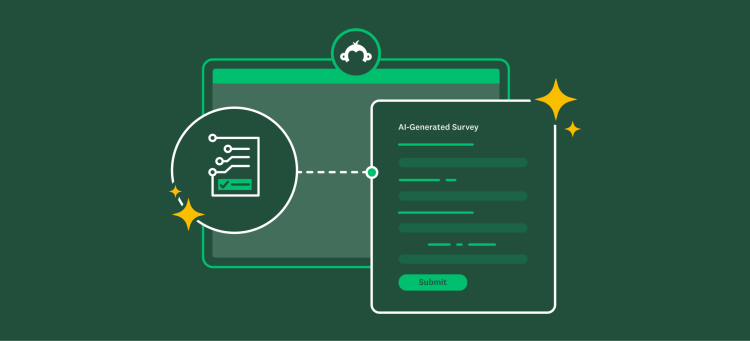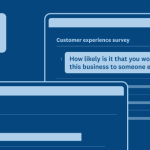We spend a great deal of time at SurveyMonkey focusing on survey design, as in crafting questions and answers well, implementing survey logic so that we can get the most relevant data, and ensuring that responses are not biased.
However, there is another critical component to good survey design—how you actually make the survey look and feel for your respondents. The better the visual design of your survey, the more likely respondents are to not only complete it, but also take your next survey.
So how can you can create a survey that captures your audience’s attention—and keeps it? While you may be tempted to make your survey colorful or your typeface large and bold to stand out, you’ll be better off if you consider the following best practices:
1) Context is critical
Is your survey requesting feedback about professional services? Or is it asking people private or sensitive information? Goofy colors will seem out of place and may raise issues of trust—consider using neutral colors (think of these brands’ color palettes: Kaiser Permanente, IBM, Goldman Sachs).
Is representing your corporate brand important? Include your company logo in the survey title and use your brand color palette. Now if you’re sending a fun opinion poll to your friends about an upcoming party, then a plain survey might prompt them to make other plans, so feel free to let loose.
2) Make your content easy to read
Good design is about allowing the content to take the front seat. Most people skim when reading online so it’s important to make your text as easy as possible to read. To maximize legibility of your questions, consider increasing the text size of your questions and answer options.
Typically, sans-serif fonts like Arial, Helvetica, and Verdana work best for the web based surveys. If your survey contains long passages of text, consider using a serif font such as Georgia or Garamond, which are both appealing and easy to read. And while you may be tempted to choose a colorful background color for your survey, remember that it will reduce the color contrast and visually compete with the text, making reading a challenge. Try to make sure the color of your text contrasts with the page background—black or dark gray text on white background might look a touch plain, but it offers the highest color contrast.
3) Give sign posts and mile markers
We’ve seen that keeping your total survey length as short as possible is a good way to design a survey that increases response rates. However, in cases where you are designing a longer survey, it’s good to manage your respondents’ expectations.
- Tell them up front about how long the survey should take.
- Break up your survey into pages that don’t require a lot of scrolling so it doesn’t feel overwhelming.
- Use a progress bar so respondents can see how they are doing (people like to see progress!).
Next time your colleague or manager asks you to make the survey “pop” a little more, refer them to this blog post…with a smile of course.



